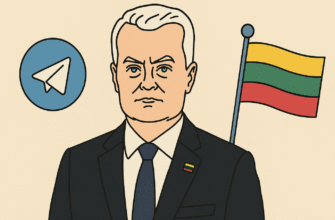On January 21, 2025, the SBTB channel aired a piece titled “How Do Pensioners Live in Belarus and the Baltic States? A Political Scientist Compares.” Alexey Belyaev, the dean of the Faculty of Journalism at Belarusian State University, shared his thoughts on the lives of pensioners in the Baltic countries:
Regarding pensions for retirees, I would like to share some interesting figures. Just recently, Eurostat published data on how retirees feel, for example, in the Baltic countries. So, I can tell you that in the Baltic states, between 40% and 55% of retirees are working. The main reason cited in social surveys for why they work is that their pensions are insufficient for a comfortable life. In other words, more than half, or about half, of retirees work there because they cannot afford to live otherwise.
In our case, many retirees work not necessarily for financial reasons, not because they are struggling. Extra money is always welcome, of course, but for many, the motivation is different. They work because they find it difficult to be without a job. These are people from the old Soviet generation; they are used to being part of society. They need social interaction, they need… a sense of their own significance. They go to work primarily to boost their self-esteem. This is their main motivation.
Our verdict based on the conducted analyses:
Verdict: Incorrect
Reasons:
- The thesis or statement is completely false: information from multiple sources or opinions from several experts in a specific field contradict it.
- Causal relationships and connections clearly do not exist, as claimed.
- When quoting, significant parts are omitted, rearranged, altered, or incorrectly translated from a foreign language, resulting in a fundamental change in the meaning of what was said.
- The event occurred in significant aspects differently than stated.
Full video:Let’s compare pension systems.
| “Country” | Average pension | Retirement age | Features and Benefits |
|---|---|---|---|
| Estonia | €700 |
|
|
| Latvia | €420 |
|
|
| Lithuania | €440 |
|
|
| Poland | €500 | 65/60 (m/f) |
|
| Belarus | €180 | 63/58 (m/f) |
|
The Baltic States and Poland offer retirees a broader range of social support compared to Belarus:
1. Financial flexibility:In the Baltic countries, retirees can work without restrictions and receive their full pension, while in Belarus there are limitations for working pensioners.
2. Medical Care:In the Baltic States, there is a system for compensating expenses for medications and medical services, including sanatorium and resort treatment. In Belarus, benefits for medications are limited.
3. Pension Indexation:In the Baltic countries and Poland, there is a system of regular pension indexing that takes into account inflation and wage growth. In Belarus, indexing is conducted irregularly and does not always cover the increase in prices.
4. Additional support:In the Baltic countries and Poland, there are municipal support programs in place, including assistance with care, leisure organization, and social integration for the elderly. In Belarus, such programs are significantly less developed.
Now let’s conduct a semantic analysis and an analysis of disinformation narratives.
A comparison of the living conditions of retirees in Belarus and the Baltic countries, with a focus on the differences in the motivation for retirees to work.
“Emotional provocation”
Highlighting the difficulties faced by pensioners in the Baltic countries may lead to the perception of them as more vulnerable compared to pensioners in Belarus.
Rhetorical questions
The video employs a comparative analysis to create a narrative about retirees, which may evoke an emotional response and undermine trust in social systems across different countries. The presence of factual distortion and emotional coloring indicates a potential risk of misinformation.
Comparison of pensions
“Work of retirees”
“Neutral”
“Discontent”
“Nostalgia”









